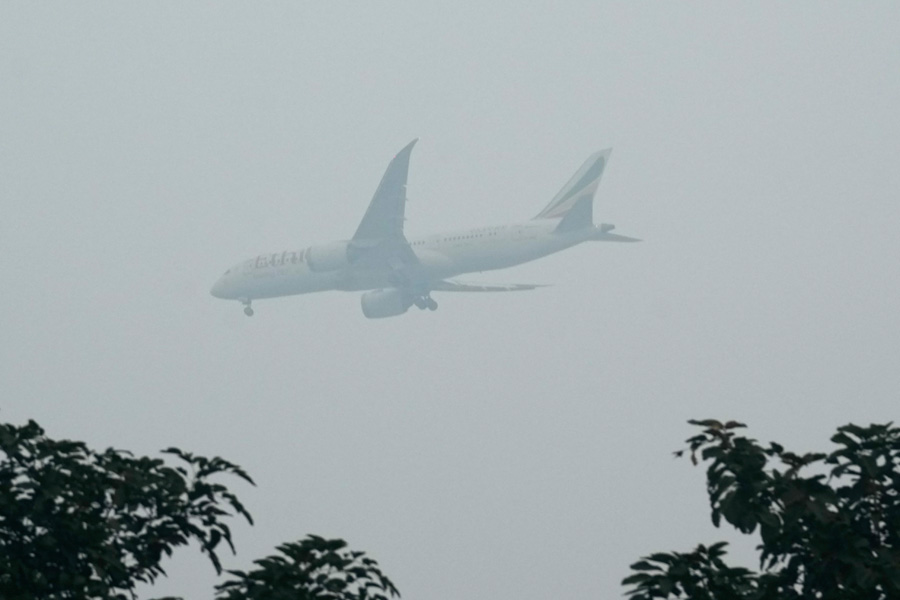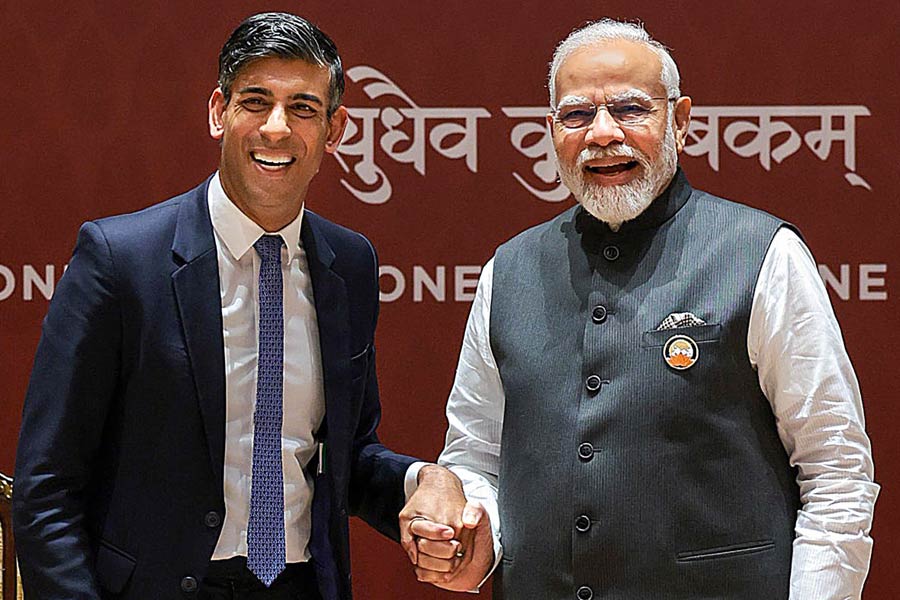Delhi's Air Quality "Severe," but Slight Improvement Expected Before Diwali
Meteorological Department Says Wind Direction Will Shift, Helping to Lower Smoke Levels

On Thursday morning, Delhi's air quality was rated as "severe." However, because of the possibility of somewhat improving weather, a minor improvement is anticipated just before Diwali.
On Thursday at 8 am, the city's Air Quality Index (AQI) was 420, down from 426 at 4 pm on Wednesday. The Indo-Gangetic plains were covered in clusters of red dots on the Central Pollution Control Board's AQI map, which denotes dangerous air quality.
Extremely poor air quality was also observed in nearby Ghaziabad (369), Gurugram (396), Noida (394), Greater Noida (450), and Faridabad (413).
A new western disturbance sweeping northwest India will cause a shift in wind direction from northwest to southeast, which will assist lower the amount of smoke from stubble burning, but sluggish wind speed will offset this, according to officials at the India Meteorological Department.
The official said that the wind speed would rise from between 5 to 6 kmph to approximately 15 kmph on November 11 when the western disturbance passes. This will assist in the dispersion of pollutants prior to Diwali.
Data from the Decision Support System, a numerical model-based framework that can identify sources of particulate matter pollution in Delhi, show that 38% of the air pollution in Delhi on Wednesday came from stubble burning in neighboring states, especially Punjab and Haryana. It's probably going to be 27% on Thursday and 12% on Friday.
According to the study, transportation also plays a significant role, accounting for 12–14% of Delhi's unhealthy air.
The Delhi administration postponed the December winter vacation for all schools on Wednesday due to the increasing levels of air pollution. The new dates for the holiday are November 9–November 18.
The Supreme Court's rulings have prohibited the introduction of app-based taxis into Delhi, according to Delhi Environment Minister Gopal Rai.
Additionally, he said that the odd-even automobile restriction plan would be put into force in the nation's capital after an order and review by the Supreme Court. Friday is when the case will be heard again.
The Delhi government's automobile restriction system, which aims to reduce traffic pollution, was questioned by the supreme court on Tuesday, calling it "all optics" and questioning its efficacy.
Rai had on Monday stated that the flagship program, which allows automobiles to run on alternating days depending on the odd or even final digit of their registration numbers, will be implemented between November 13 and November 20 in anticipation of significant worsening of the air quality after Diwali.
The Delhi-NCR area is expected to have "very poor" to "severe" air quality for the next five to six days, according to the Ministry of Earth Sciences' Air Quality Early Warning System.
According to doctors, inhaling Delhi's contaminated air has the same negative consequences as smoking around ten cigarettes a day.
According to Rajesh Chawla, senior consultant in pulmonology and critical care at the Indraprastha Apollo Hospital, prolonged exposure to high levels of pollution can cause or exacerbate respiratory conditions like asthma, bronchitis, and chronic obstructive pulmonary disease (COPD), as well as significantly increase the risk of cardiovascular disease.
In the nation's capital, tough regulations imposed by the Graded Response Action Plan (GRAP), the federal government's last phase of air pollution management plan for Delhi-NCR, have also been put into effect.
The limitations outlined in Stage IV of GRAP, which prohibit all forms of building and the entrance of vehicles that emit pollutants into Delhi, came into force on Sunday after a decline in the city's air quality to'severe plus' (AQI values above 450).
Stage I is Poor (AQI 201-300), Stage II is Very Poor (AQI 301-400), Stage III is Severe (AQI 401-450), and Stage IV is Severe Plus (AQI over 450) are the four phases into which GRAP divides acts.
Unfavorable weather patterns, car emissions, burning paddy straw, firecrackers, and other regional sources of pollution all play a part in the dangerously high levels of air pollution that Delhi-NCR experiences every winter.
An investigation by the Delhi Pollution Control Committee indicates that the period of highest pollution in the city is from November 1 to November 15, coinciding with an increase in the number of stubble burning occurrences in Punjab and Haryana.
The previous two weeks have seen a decrease in Delhi-NCR's air quality because to a steady drop in temperature, calm breezes that trap pollutants, and an increase in the burning of paddy straw across Punjab and Haryana.
Of all the capital cities in the world, Delhi has some of the worst air quality.
According to a research released in August by the Energy Policy Institute at the University of Chicago (EPIC), air pollution in Delhi is causing people to live shorter lives by almost 12 years.
Except for the headline, this story has not been edited by Press Time staff and has been published from a syndicated feed.





















































